Images – People of Ladakh
The cheerful nature of people of Ladakh is infectious and easily rubs on to people visiting the region. It is perhaps one of the important factors besides magnificent landscapes and expansive lakes that attracts visitors from across the world to Ladakh. Here are some images of people of Ladakh.
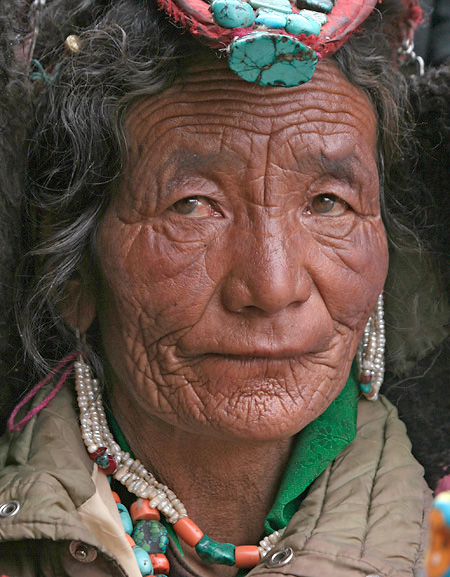
A lady at looks on as the annual Gustor Festival is in progress at Korzok Village on the banks of Tso Moriri Lake. The monastery festival is an opportunity for nomadic changspa people to get together and meet. Women adorn their turquoise jewellery and come dressed at their traditional best. People of all ages gather at the monastery, greet their friend and relative and celebrate the two-day festival that has a mix of tradition and revelry.

A changspa woman with her turquoise-embedded headgear at the annual Korzok Gustor Festival.
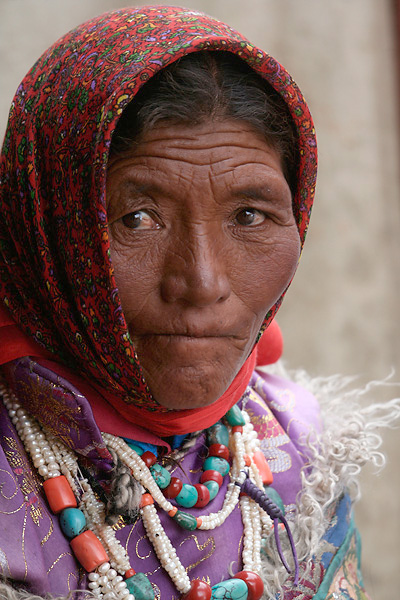
A changspa woman with her turqoise embedded jewellery at the annual Korzok Gustor Festival.
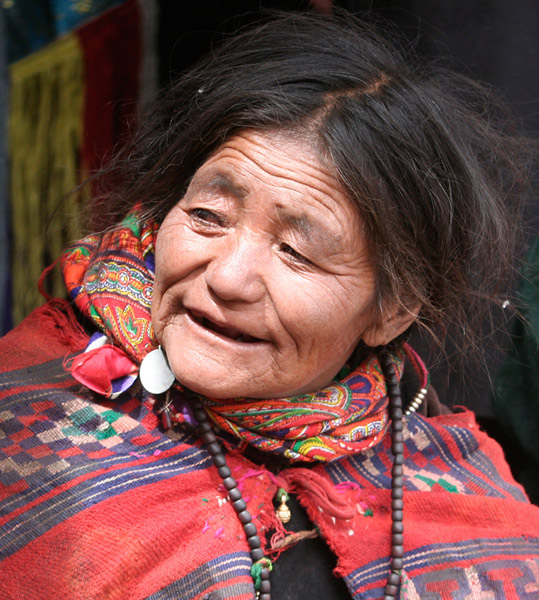
A changspa woman at Korzok Gustor Festival
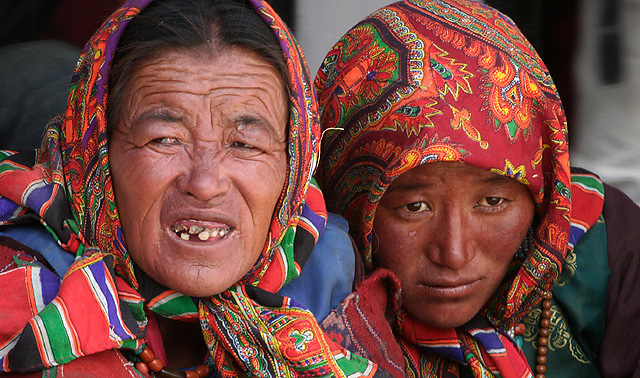
Changspa women at Korzok Gustor Festival
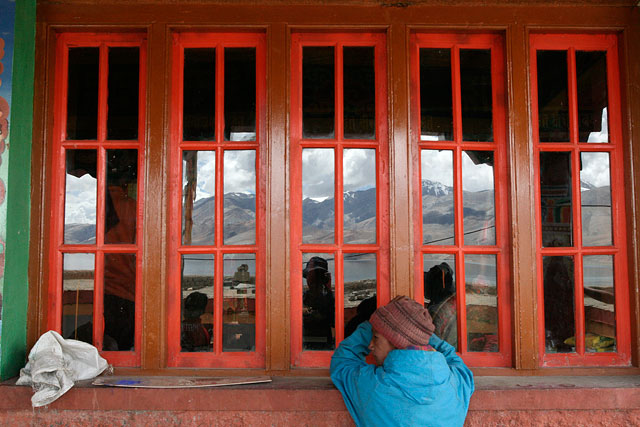
A boy peeks through the window of the prayer hall at Korzok Monastery to look at the monks getting prepared for the festivals in the room, while the mountains and Tso Moriri Lake reflect in the window.

Smiling children watching dancing monks at Korzok Gustor Festival
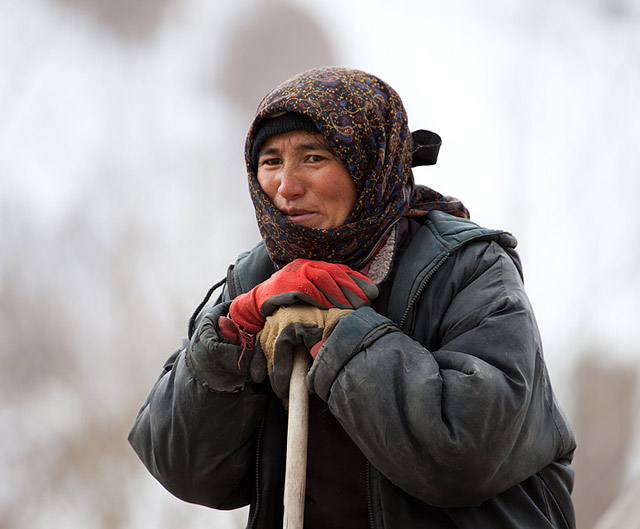
The remote Zasnkar Region gets cut off from rest of the world in the winter months, when the roads are buried in deep snow and the temperature dips 20 degrees below zero. But life must go on – the sheep have to fed, the stove must keep burning and the children must go to school. Children are going to modern schools in Zanskar only in the last few decades.
In winters, people of Zanskar rarely see new faces, except for a few adventurers who make the long walk on the frozen Zanskar River and stay for a few days in the villages before heading back. Such visitors incite the curiosity of the villagers who are always happy to begin a conversation and perhaps invite them over for a cup of tea.
This woman at Zangla Village takes a moment to talk to us at the end of day that is usually filled with lot of work even in the frigid winter months.
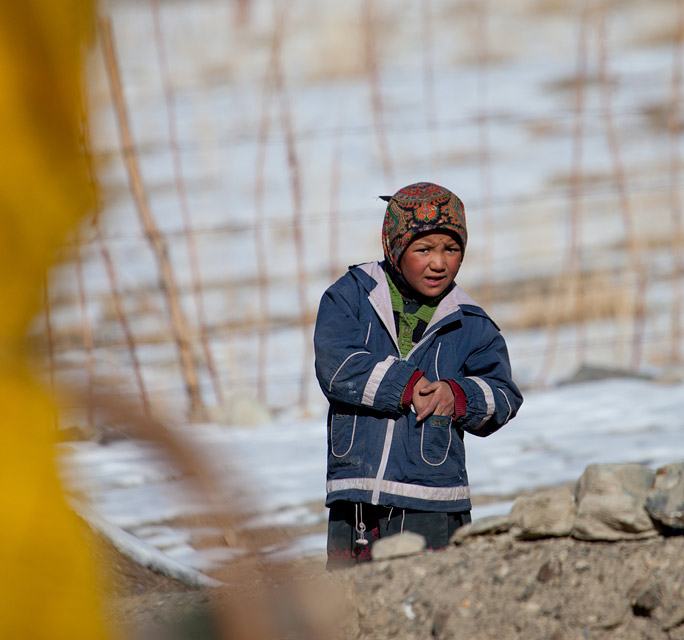
A girl pauses to speak to her mother before heading out to the school, where she will be spending her first half of the day.
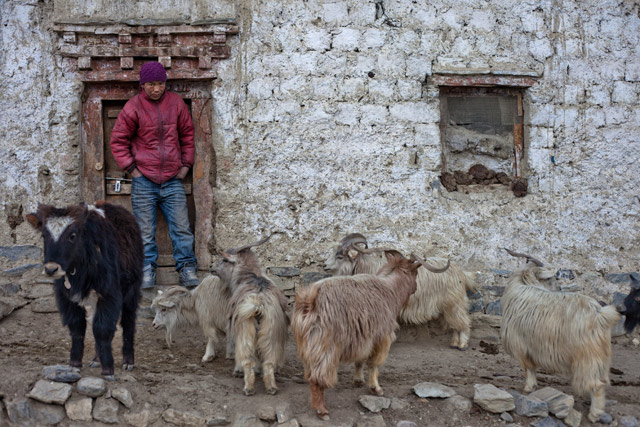
A young man has a short conversation with us before leading his sheep into a covered stable in the evening.
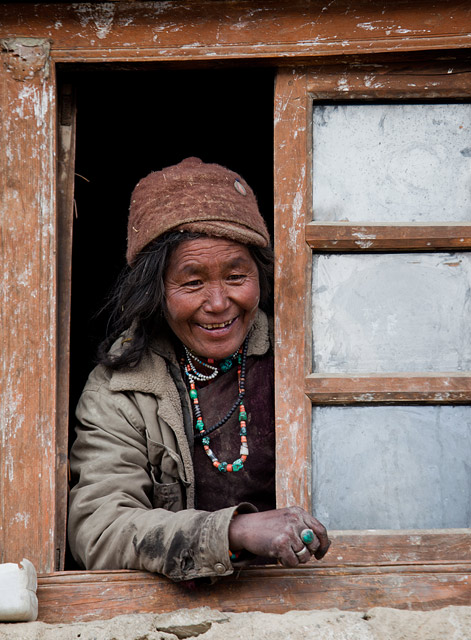
A lady is smiles at us looking through the window as we stop by to talk with her young lad taking care of his sheep nearby.
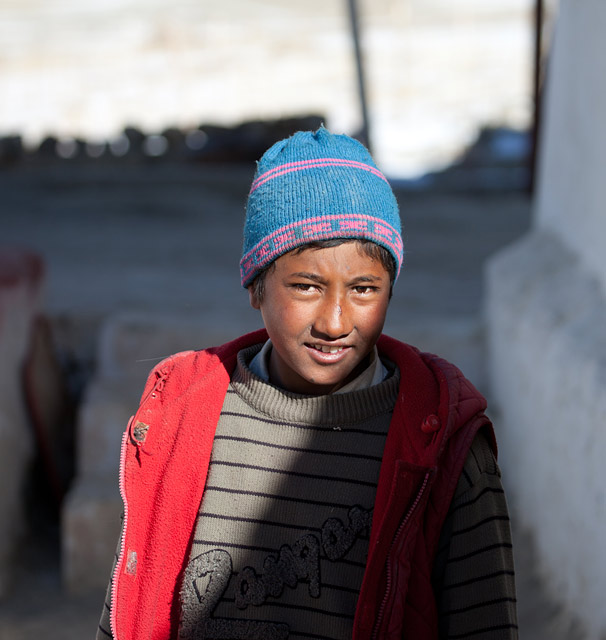
A shy boy at the house where we were staying in Zangla Village poses for the camera.
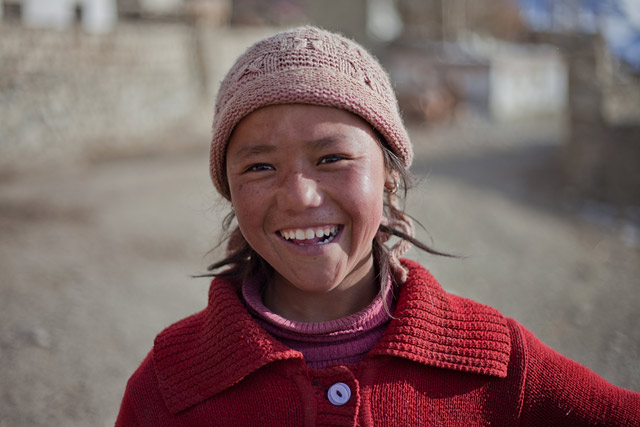
A girl smiles brightly as she starts a conversation and asks me to take her picture.
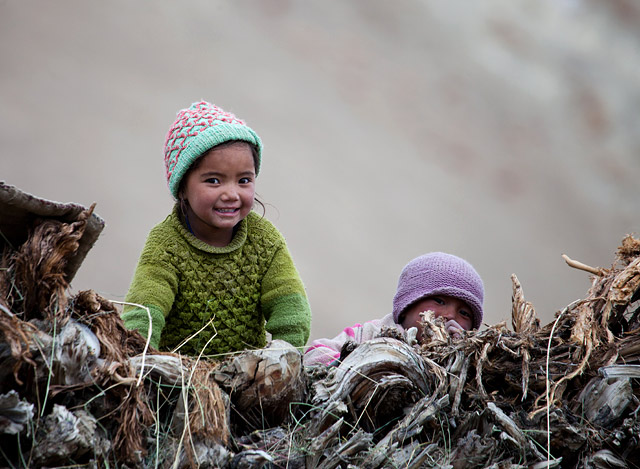
Children are happy to see new faces at their village on a cold winter evening. This little girl sang loudly to draw our attention, as her shy brother looks on hiding behind a stack of wood and hay.
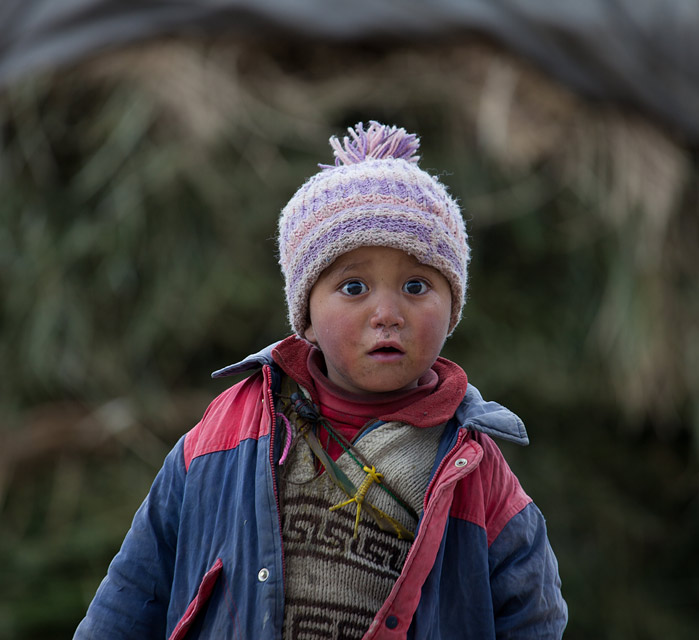
A curious young lad at Zangla Village, Zanskar.
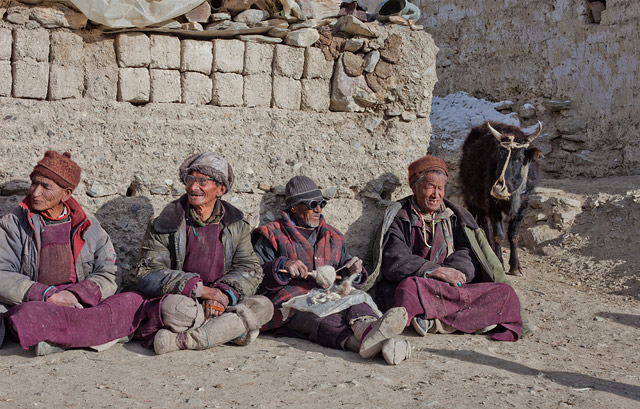
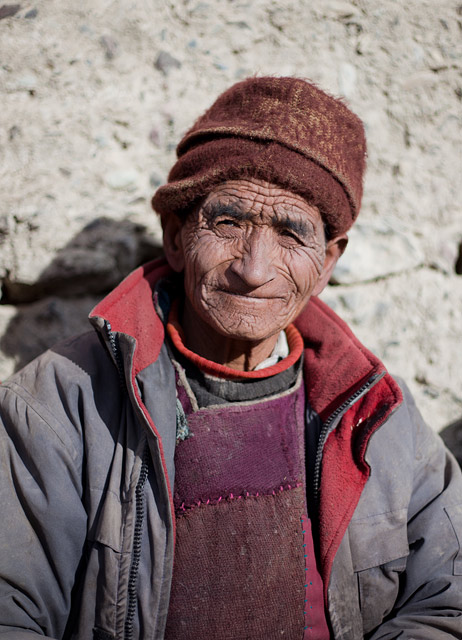
Traditionally, people gave up their ownership of land and home to their children after crossing certain age, built a khangbu—small house of their own—and retired to a life of simple living. I have never really seen a Khangbu anywhere in Ladakh. Perhaps this is a fading tradition, as I have seen houses where elders still share the family house.
In Zanskar’s Zangla Village, we saw this bunch of old men and women sunning in the evening. Some were busy knitting while everyone made some casual conversation, sometimes between themselves and sometimes with us.
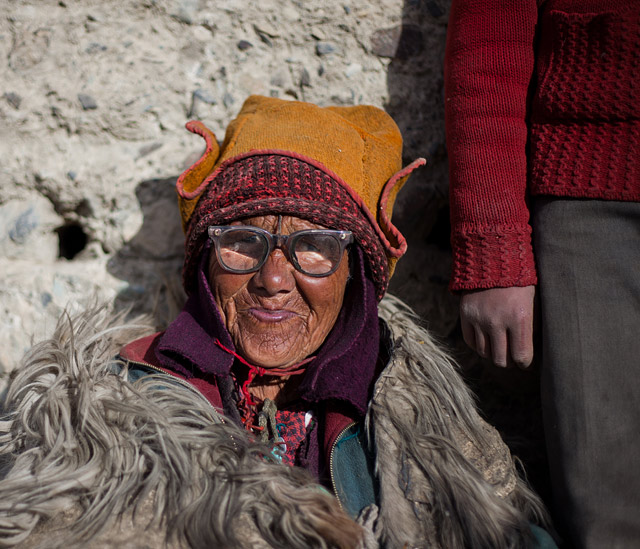
An elderly woman wearing sheepskin over traditional goncha smiles at us, while a young girl wearing a woolen sweater stands next to her.
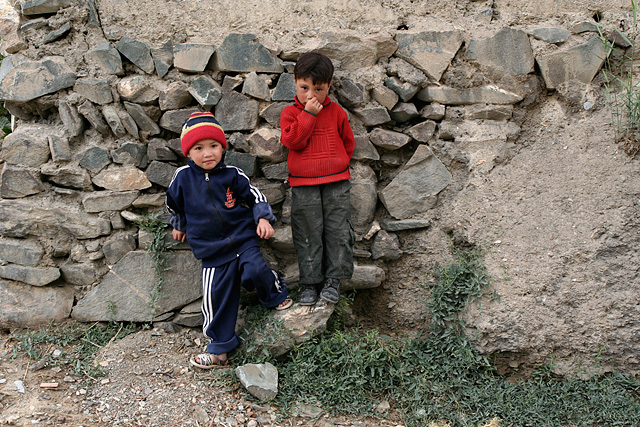
These children, who were playing quietly just outside their village at Lamayuru, pause briefly to look at the visitors.
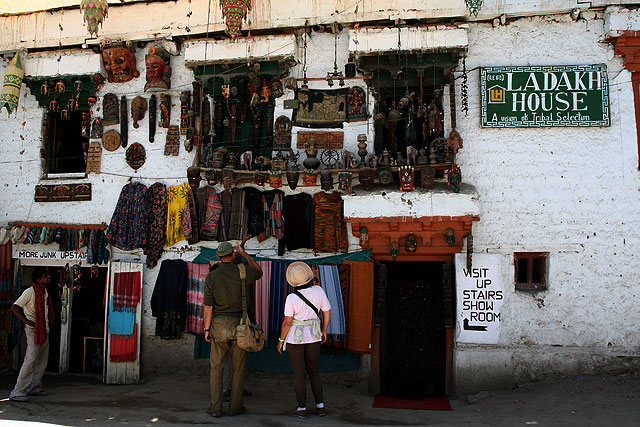
It is perhaps important to include tourists in the population of Ladakh, especially in the short summers when their numbers swell and perhaps exceeds the residents by manifolds. Leh, once a trading center and a town where several trading paths intersected and goods exchanged, now sees an influx of large number of visitors in the summer months when the weather is at its best. A good percentage of Ladakh’s population now depends on tourism income. This is also a time when there is a temporary immigration of a workforce that caters to tourists, who go back in the winter months when there are hardly any outsiders in the town.
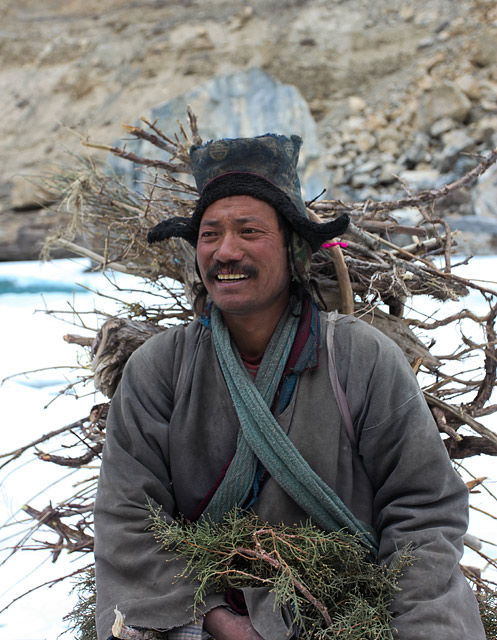
One of the great characteristics of Ladakhis is their abilities and physical strength to cope up with harsh weather and subject themselves to hard work. On a difficult expedition of walking on the frozen Zanskar River, Zanskari porters play the role of heroes who go to great extent to keep their visitors comfortable. They carry the luggages, cook and sometimes even carry trekkers on their shoulders when there is a need to step into the frigid waters. After a long day’s walk of pulling the load on their sledges, a porter still has the time for a big smile, and energy to collect a big load of wood by scouring the mountains.
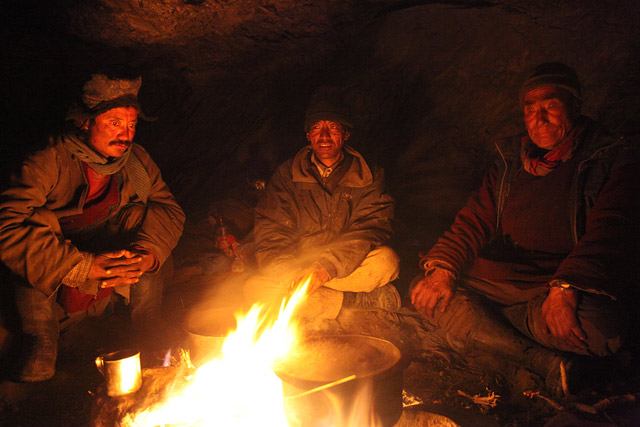
Porters warm up in a cave and cook their food as they get ready for a cold night with temperature reaching 20 degrees below zero in Zanskar.
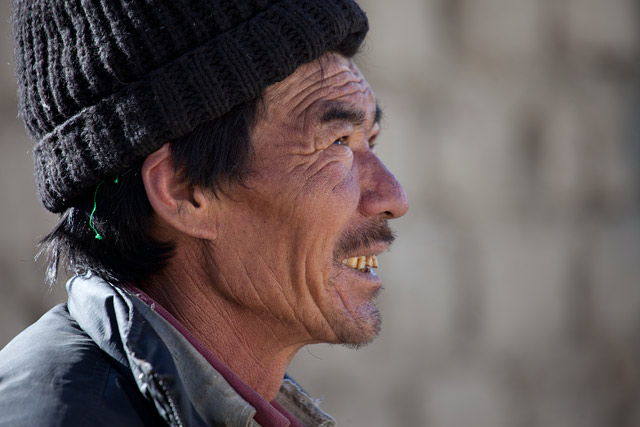
A porter who accompanied our group on the long expedition to Zanskar from Leh, walking on the frozen Zanskar River.
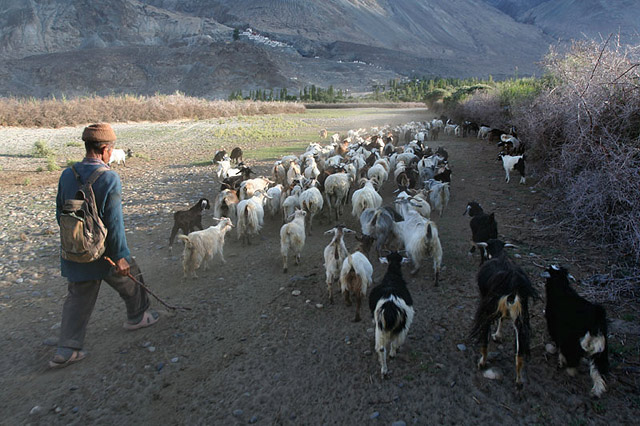
Sheep and Pashmeena Goats are an important part of Ladakh’s rural economy. While Barley fields take care of feeding the villages, Pashmeena Wool brings the much needed cash to buy everything else needed for the household. A shepherd is herding the goats back home after a day of taking them to graze in the wilderness of Nubra Valley.
Also read: my essays on the people of Ladakh.